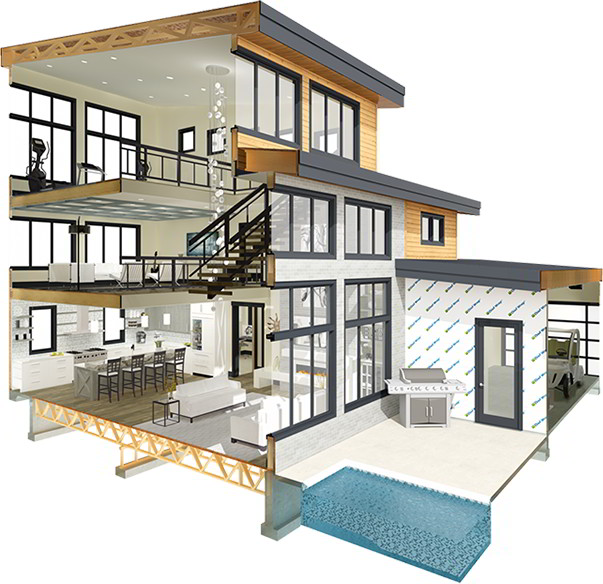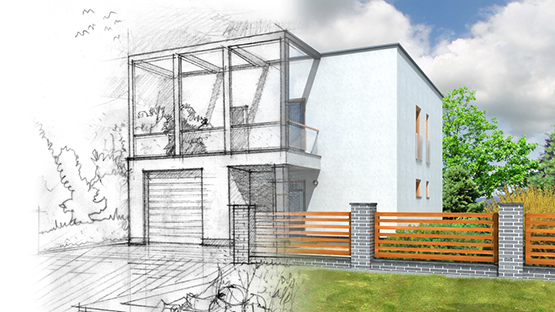Recognizing the Collaborative Process In Between Engineers and Engineers in Modern Construction Projects
The collective process between architects and designers is crucial in modern construction jobs, as it integrates layout intent with engineering usefulness. Discovering these characteristics discloses insights that can considerably affect task end results and total sector criteria.
The Relevance of Collaboration
The joint synergy between architects and engineers is necessary for the successful awareness of any building and construction job. This partnership unites unique know-how and viewpoints, enabling the assimilation of innovative style with practical engineering services. By working with each other, engineers and engineers can make sure that a project not just meets visual and functional requirements but likewise follows security, sustainability, and budgetary constraints.
Collaboration fosters a common vision, assisting in the alignment of objectives and expectations from the outset. This placement is essential in addressing potential challenges and mitigating dangers that might emerge throughout the task lifecycle. Additionally, a collaborative approach permits for the effective allocation of resources, enhancing both time and expense.
The significance of cooperation reaches the repetitive process of style and building, where feedback from engineers can notify building choices, leading to even more viable and lasting designs. On the other hand, architects can inspire designers to assume creatively regarding just how to achieve architectural honesty without jeopardizing imaginative intent. Inevitably, the joint partnership in between designers and engineers is not just beneficial; it is basic to the creation of top notch, useful, and ingenious constructed settings that meet the needs of culture.
Communication Strategies and Devices
Efficient interaction strategies and devices are essential for fostering partnership in between designers and engineers throughout the project lifecycle. Establishing clear networks of interaction is vital to ensure that all employee are lined up with task purposes, timelines, and responsibilities. Regular meetings, both in-person and online, give chances for stakeholders to review development, address problems, and make informed choices.
Making use of task monitoring software, such as BIM (Building Details Modeling) platforms, improves collaboration by enabling real-time sharing of layout modifications and technological specifications. These devices assist in openness, permitting engineers and designers to envision adjustments and assess their effect on the total job.

Shared Goals and Project Vision

Developing shared goals involves open discussion and a comprehensive understanding of each discipline's contributions. Engineers generally concentrate on style intent, spatial relationships, and individual experience, while designers highlight structural integrity, systems capability, and compliance with policies (cda architects). When these point of views are lined up, the outcome is a cohesive project that sticks to both innovative aspirations and technological expediency
Additionally, a distinct job vision promotes responsibility amongst staff member, motivating each individual to take possession of their role in achieving the wanted outcome. Routine check-ins and collaborative workshops can better reinforce this commitment, allowing for modifications to be made as the project advances. Ultimately, a shared vision have a peek at this website not only boosts teamwork but additionally raises the high quality of the last deliverable, resulting in effective task conclusion.
The Function of Modern Technology
Leveraging technology has come to be important in boosting partnership in between architects and designers. Building Information Modeling (BIM) stands out as a pivotal technology, allowing both engineers and designers to produce thorough 3D designs that encapsulate style intent and structural integrity.
Moreover, cloud-based platforms enable seamless partnership, permitting job stakeholders to gain access to and update job information from anywhere. This promotes a culture of transparency and responsibility, as modifications can be tracked and assessed in real-time. In addition, see it here mobile applications additional enhance communication, providing on-site teams with prompt access to task specs and updates.
Arising modern technologies such as man-made intelligence and device knowing are additionally beginning to contribute in anticipating analysis, aiding groups recognize potential issues before they develop. Eventually, the role of innovation in architecture-engineering collaboration not just improves workflow performances yet additionally boosts innovation, causing even more successful project end results. By welcoming these technological developments, engineers and engineers can guarantee a more cohesive and productive collective procedure throughout the building and construction lifecycle.
Study in Successful Collaborations
Various instance studies show the profound influence of efficient partnerships in between architects and engineers on project outcomes. One remarkable example is the cooperation on the High Line in New York City, where landscape designers, engineers, and city organizers interacted to transform a deserted rail line into a vibrant public park. This multidisciplinary method not just enhanced the visual top quality yet also made sure structural security and ecological sustainability.
Another excellent case is the design and building of the Sydney Concert Hall. The collaboration in between engineer JÃ ¸ rn Utzon and structural engineer Ove Arup exhibited innovative analytical. Their partnership enabled the famous shell-like design while dealing with complicated engineering difficulties, ultimately leading to a timeless building masterpiece.
The Burj Khalifa in Dubai even more demonstrates the relevance of collective initiatives. cda architects. The assimilation of style and design know-how allowed the task team to accomplish unmatched heights while sticking to security guidelines and aesthetic vision
These instances underscore the relevance of communication, depend on, and shared goals. In today's intricate building setting, such partnerships are necessary to navigating difficulties like this and delivering jobs that fulfill both useful and visionary goals.
Conclusion
To conclude, the collaboration between architects and engineers is important for the success of modern-day building and construction jobs. Effective interaction techniques, a shared project vision, and the assimilation of sophisticated innovations are vital components that facilitate this collaboration. By promoting a society of accountability and leveraging devices such as Structure Information Modeling (BIM), groups can navigate task intricacies, ensuring that aesthetic, practical, and sustainability purposes are attained. Inevitably, this harmony causes innovative and successful project results.